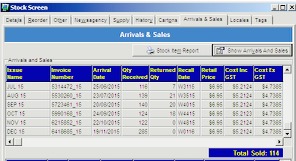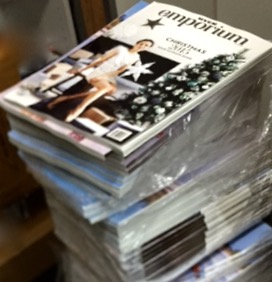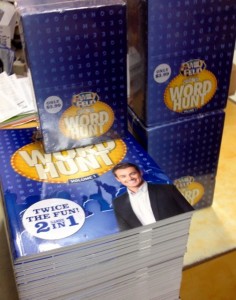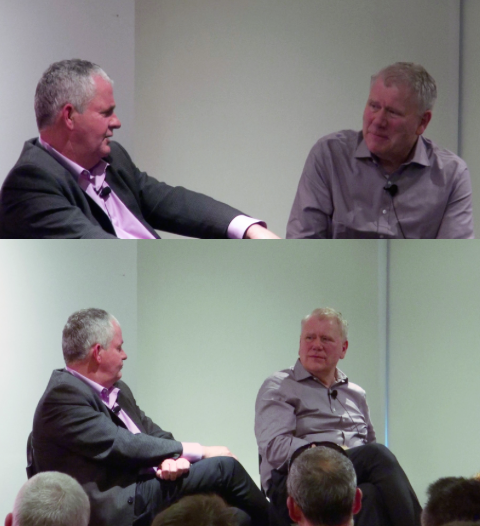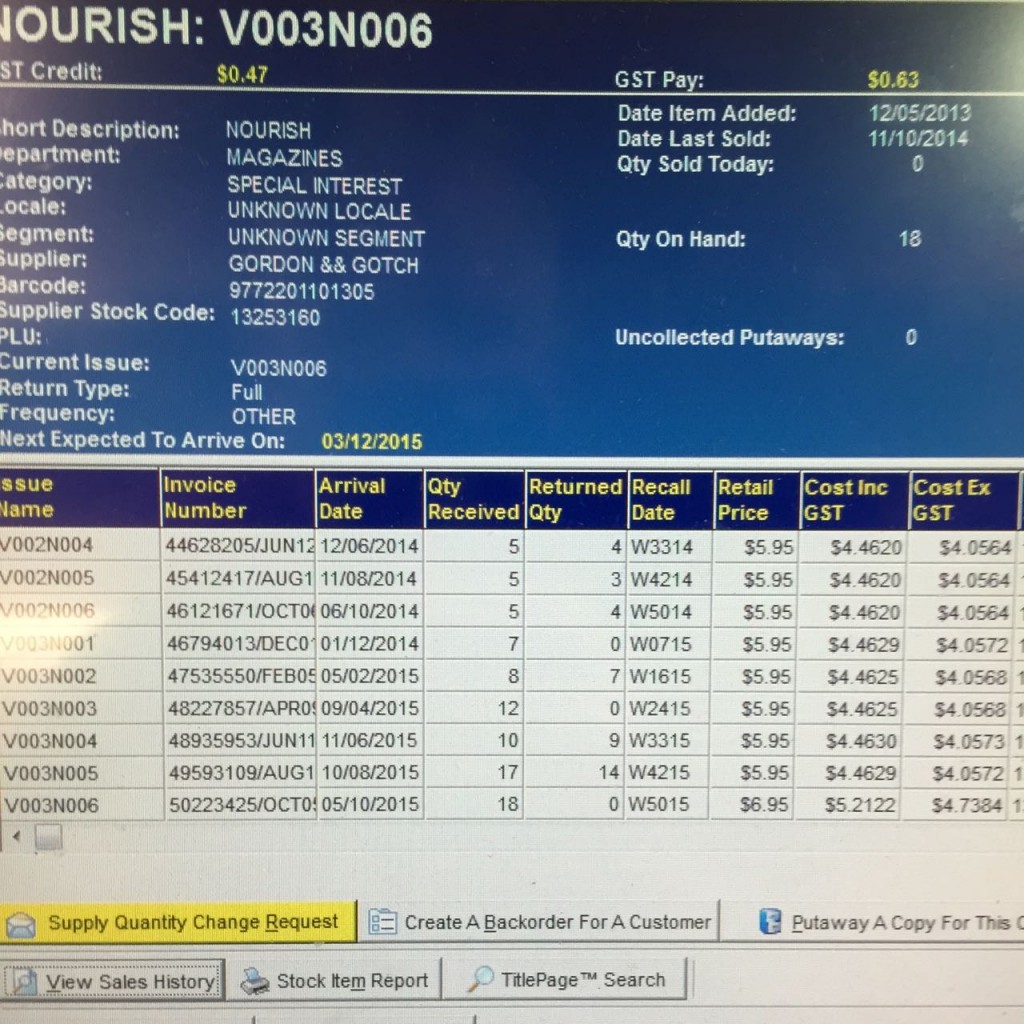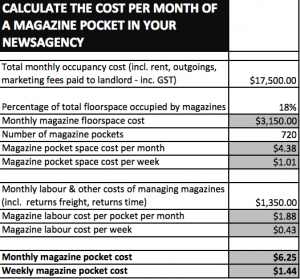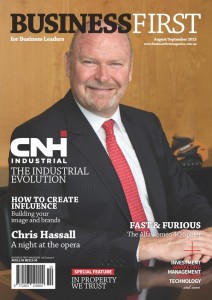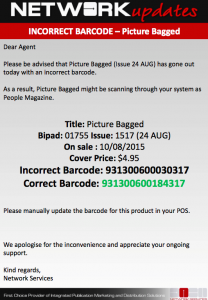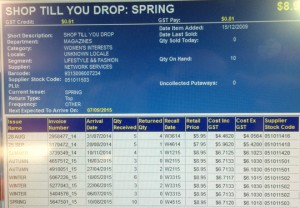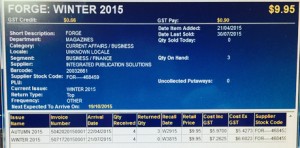In the three years since I published my article How to do a magazine relay in your newsagency plenty has changed. In this post I provide up to date advice. I hope you find it useful.
Before you start the relay, consider the amount of space you want to allocate to magazines. Do not allocate space to fit what you are sent. Allocate space to make money.
Today’s newsagency needs somewhere between 15% and 25% of floor space allocated for magazines. With the category one of the least valuable in pure gross profit terms efficient use of space is key.
Once you have your floor space allocation and know your fixture situation you will have a pocket count.
Now you can get down to your relay.
The relay you do in your business is your relay. There is no right or wrong way. There is also no end point. What you do today will need refining next week and the week after. So, do not over think what you want to do as that would be a waste of time.
The goal of the relay has to be to disrupt magazine traffic in pursuit of an increase in sales. What I mean is: change everything, upset customers and staff, sell more magazines as people discover titles they did not know you had.
PLANNING
Determine your zones shopper: garden, food, men, women, sports etc. In some locations you will full face titles while in other locations you will fit three titles into two pockets and in others as many as six titles into two pockets. The categories where I use less than one pocket per title is: special interest, British weeklies, food, comics and some craft segments.
Yes, customers looking for a destination title for which you receive a small quantity will look for the title. Save money, use less space for these titles.
Look at the percentage of sales delivered by each magazine category and look at sales trends for the categories. Tote up broad groups. For example the percentage of sales for women’s weeklies, women’s interests, crafts & hobbies, crosswords, home & lifestyle and food & wine. If your newsagency is like mine, this grouping will account for more than 50% of your magazine sales.
Use your data to broadly map out a plan.
NOW, THE MAGAZINE RELAY
I suggest it is done by one person, an owner, working alone.
- Take every magazine off the shelves. That’s right. If you are going to do this you have to commit and taking every magazine off the shelves is a commitment. Also, take down all magazine posters.
- Clean the shelves. What an opportunity!
- Build the women’s zone. From the busiest section in. If it is an aisle, start with women’s weeklies on one side and fashion (marie claire, Cleo, Cosmo, Vogue) on the other. Concentrate on one side first, the weeklies. Respect top sellers, give New Idea, Women’s Day, Famous, NW, Who, OK!, That’s Life and Take 5 prime position.
- Place a half or full column of crossword titles next to the weeklies.
- Next to weeklies place, in order, pockets of Better Homes and Gardens followed by Australian Women’s Weekly, British women’s magazines (yes, all of them), country living titles, home and living titles, food, wedding with a waterfall of the major title and hair. For me, space wise, that sees out one side of the aisle.
- On the opposite side, directly across from and facing women’s weeklies, I have fashion young, fashion older and I end this with a waterfall of Frankie. Next is women’s health starting with younger target titles and blending to older ones. Next is pregnancy and baby followed by crosswords. This usually rounds out that side.
- This is my women’s aisle.
- Using key titles as borders and features at the same time.
- I look for one space on each side for an in-location display, where I take between four and six pockets for a poster supporting a title. This can ease the visual conflict of a mass of titles and drive incremental business for a good title to boot.
What I do in women’s is the same for the other zones I create. I do each zone separately and try and get into the head space of the shopper of the zone – using the most popular titles to act as beacons, or signposts, for the zone.
I also take note of covers and give really good covers, eye catching covers, time in the spotlight.
I am careful what I place next to top selling titles. This is a prime spot, next to the popular titles. Choose wisely. Choose titles that naturally fit next to the big titles, titles shoppers are likely to browse and purchase on impulse.
If I am not sure about where to put a title I put it aside and move on.
I take extra time with special interest and hobby titles. For example, I put railways and model railroad titles near each other but I am careful to ensure that they are separated as they appeal to two shoppers and only occasionally do you see titles from both segments in the same basket.
Within the zones I look for and respect specialisation. For example, within men’s lifestyle and sports I create a clean space for the quality serious fitness titles like Coach, Men’s Health and Men’s Fitness.
REVIEW, FEEDBACK, FOLLOW UP
You’re not done when you think you are done. Track sales, listen to your team and your customers. Tweak where you feel it is necessary.
Bring new issues to the fore. Continue to be engaged in how your magazine department looks.
Continue to look at your sales data. If there is no lift be open to further change.
FINAL WORDS
Doing a magazine relay can be like doing one of those kid’s puzzles – you move them around and around until you have the completed image. That image can look and feel like a work of art once you are done.
I can’t stress enough the importance and value of a magazine relay to your business and you personally. This is you placing your stamp on the business. It is you breaking free from being a conveyer belt newsagent. It is you taking ownership of your business.
If you have made it this far, thanks for reading. Magazines really are a point of difference which we need to work harder at embracing – despite the challenges of the distribution system.
I’d be happy to answer questions or discuss magazine relays with anyone: mark@towersystems.com.au or 0418 321 338.
Over to you…

